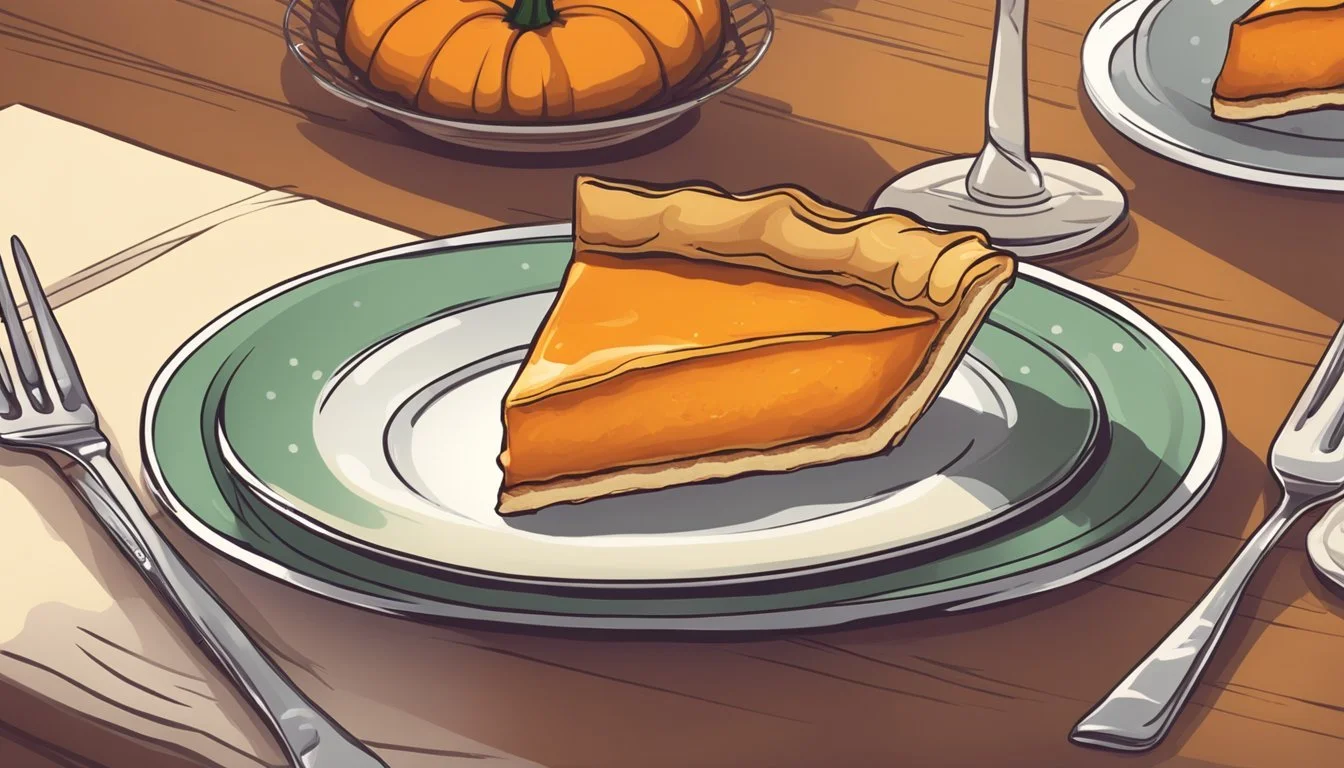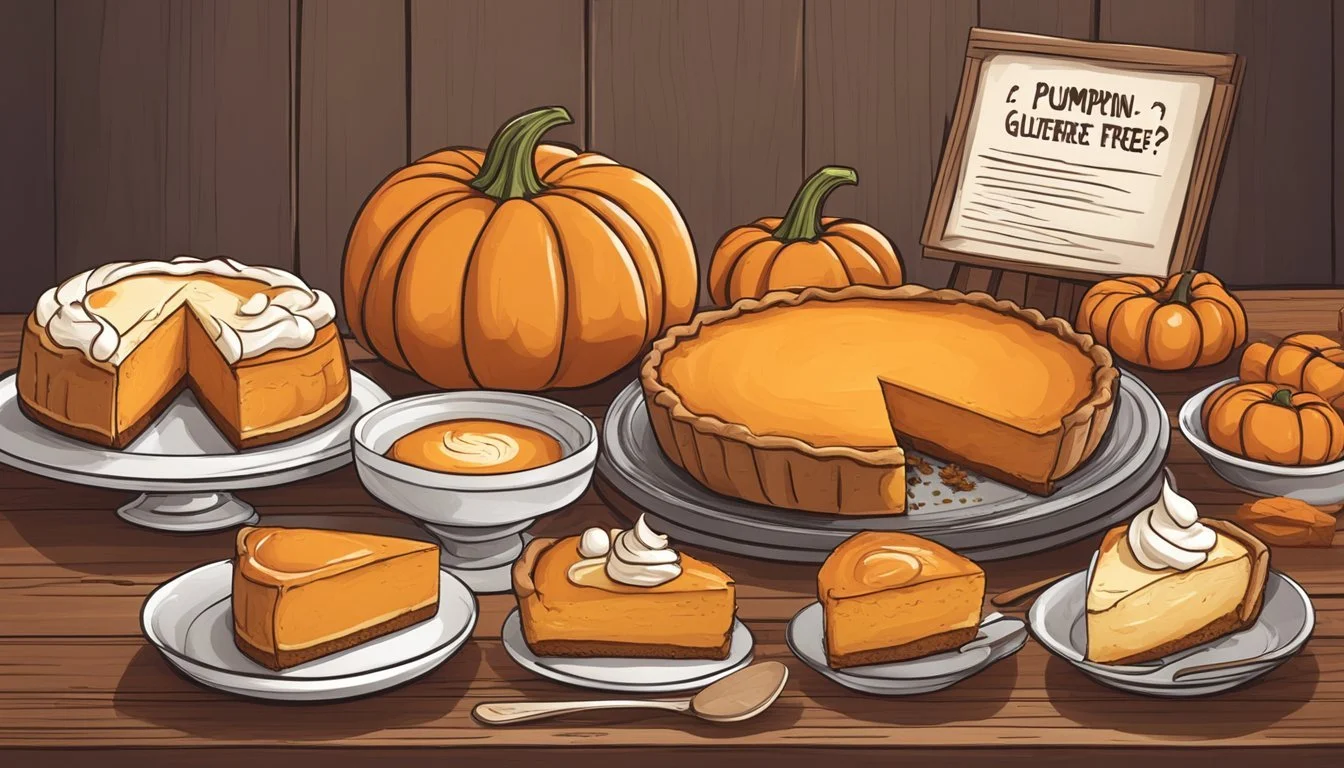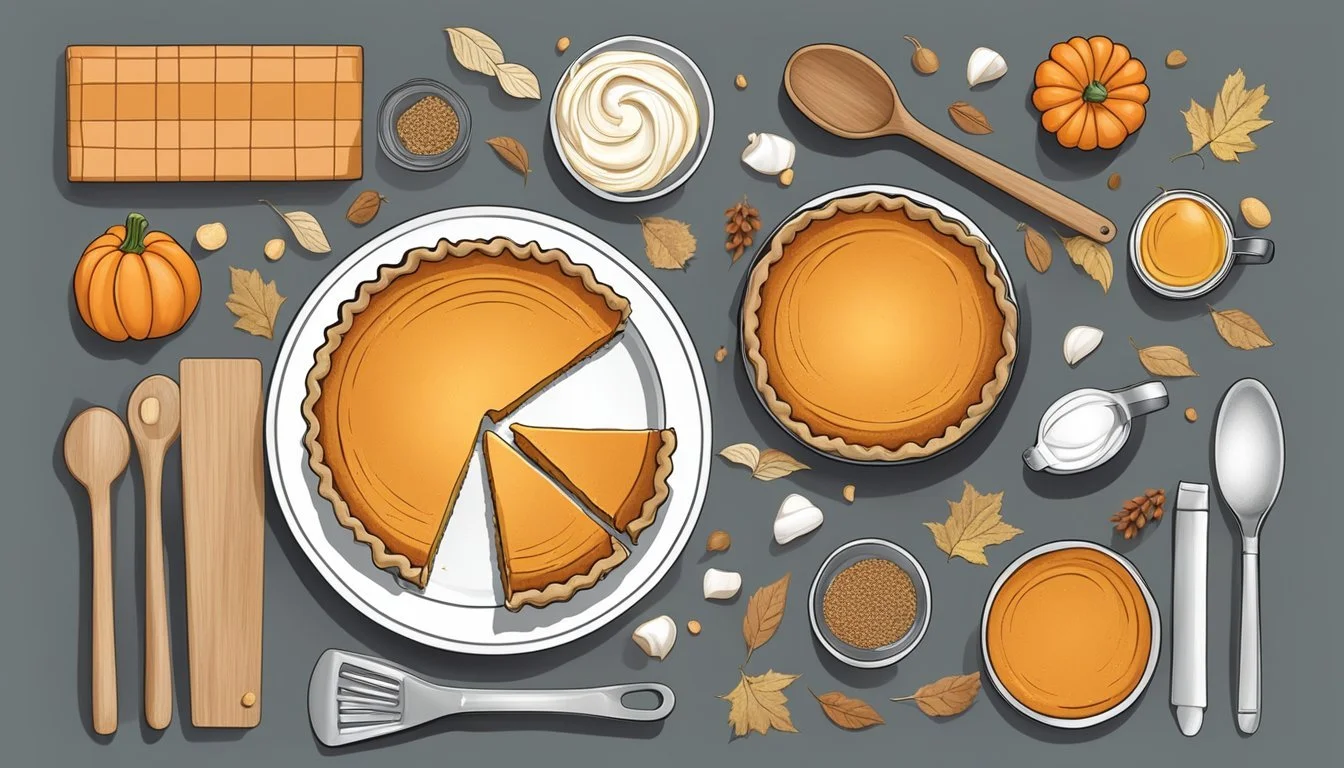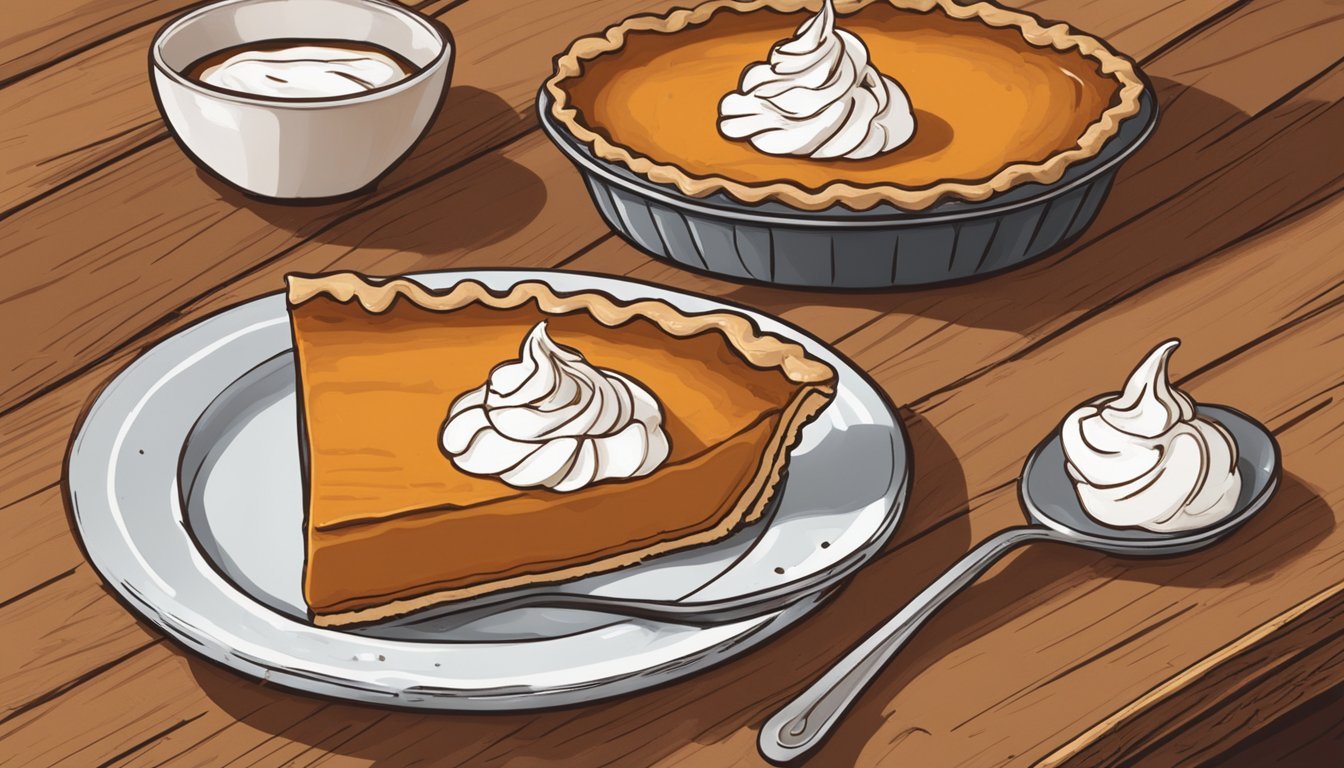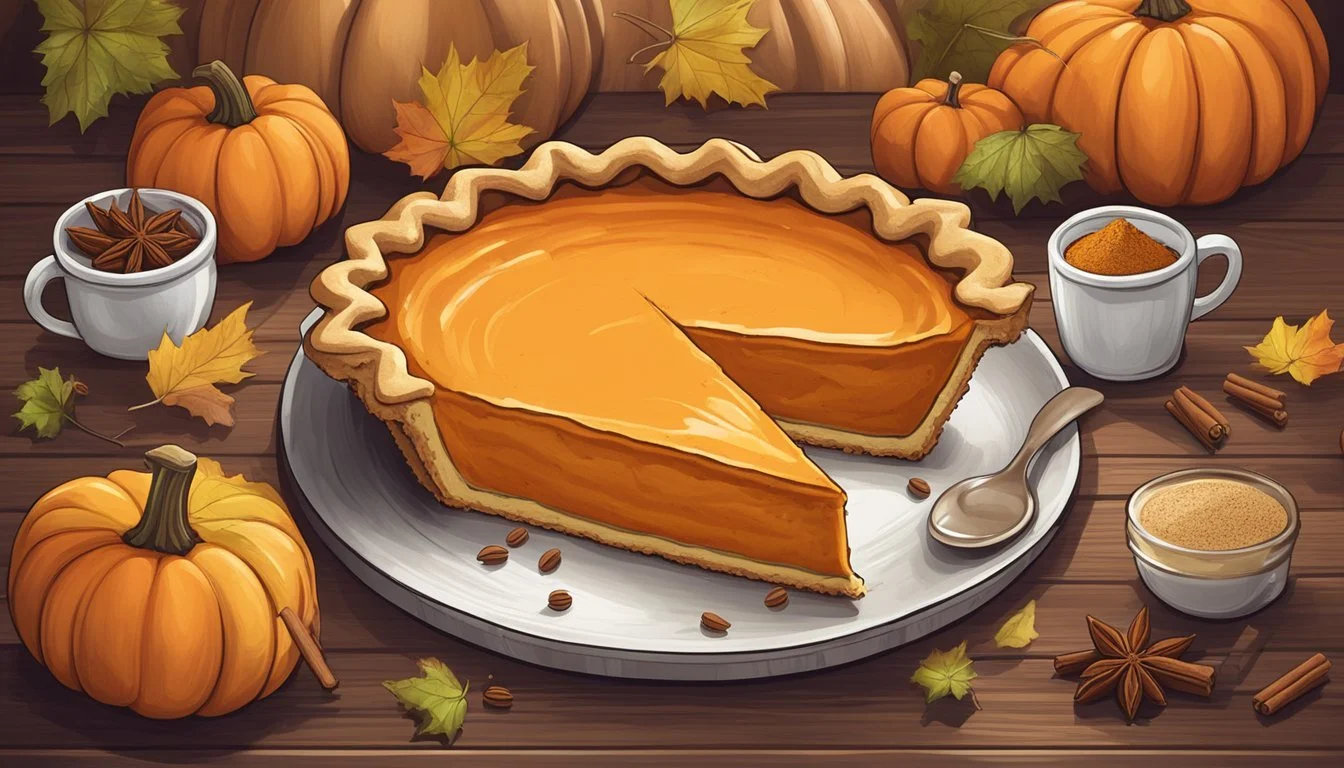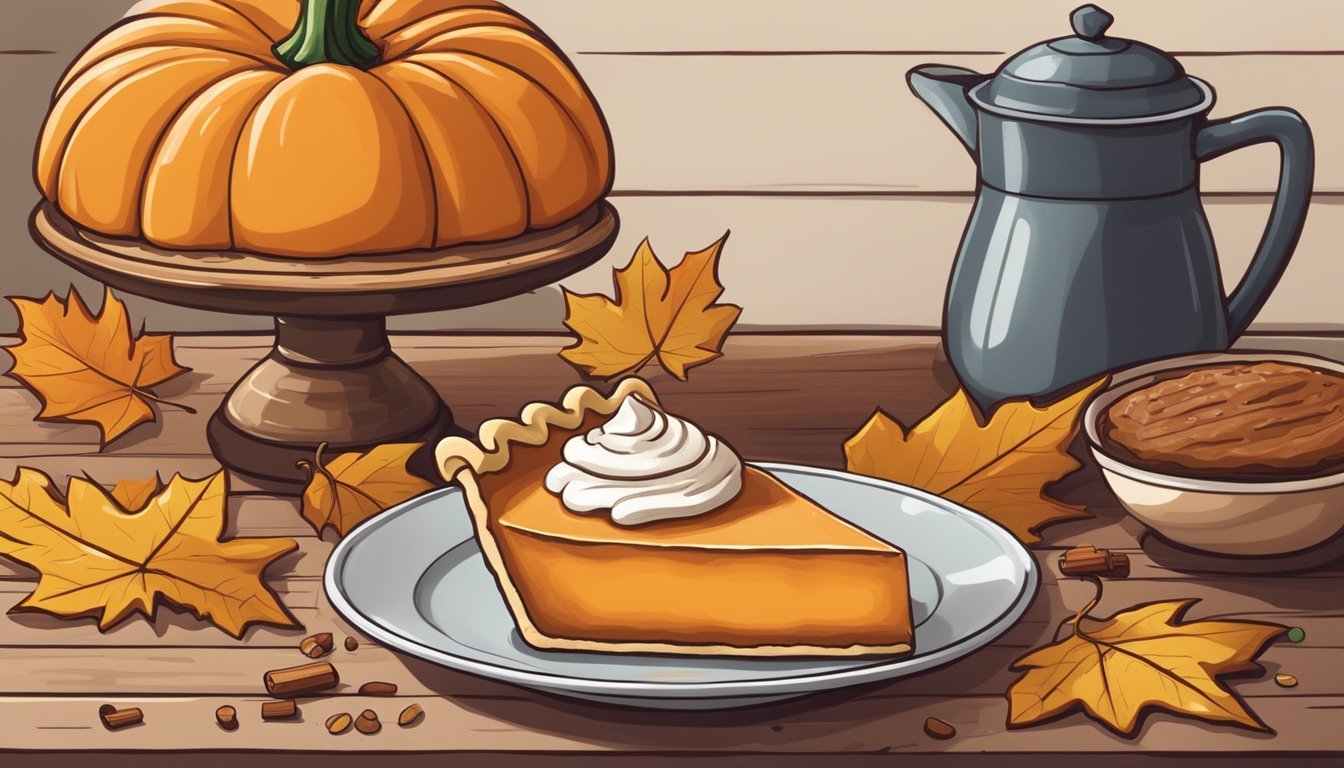Is Pumpkin Pie Gluten-Free?
Understanding Its Ingredients and Preparation
Pumpkin pie is a quintessential dessert that graces many tables during holiday gatherings, especially at Thanksgiving. Its creamy filling, spiced with a blend of warming seasonings like cinnamon, nutmeg, and ginger, encapsulated in a flaky crust, has made it a beloved tradition in many households. However, for those with celiac disease or gluten sensitivity, the traditional pumpkin pie presents a challenge, as pie crusts typically contain gluten—a protein found in wheat, barley, and rye.
The good news is that gluten-free versions of this holiday favorite are indeed possible, utilizing alternative flours and binding agents like xanthan gum to replicate the texture and taste of the classic pie crust. Gluten-free baking has come a long way, with a variety of recipes and premade options available to ensure everyone can enjoy pumpkin pie without compromising on taste or texture. These gluten-free adaptations allow the timeless experience of sharing a slice of pumpkin pie to be inclusive, honoring dietary restrictions without losing the essence of the cherished holiday tradition.
Understanding Gluten in Baking
When baking pies, it's important to know the role of gluten, as it's a key structural protein. Its presence or absence can significantly alter the texture and quality of the baked good.
What Is Gluten?
Gluten is a composite of storage proteins termed prolamins and glutelins, found in wheat and related grains, including barley and rye. In baking, gluten is the element that provides elasticity and strength to dough, allowing it to rise and hold shape. Its network of proteins traps air bubbles, contributing to a chewy and airy texture.
Sources of Gluten in Traditional Pies
Flour: Wheat flour, the traditional base for many pie crusts, is a primary source of gluten.
Wheat-based flours containing gluten All-purpose flour Whole wheat flour Bread flour Pastry flour
Gluten-Free Flour: To make a pie gluten-free, bakers substitute traditional wheat flour with gluten-free flour blends crafted from ingredients such as rice flour, almond flour, or potato starch. Not all gluten-free flours behave the same; they often require different ratios and additional binding agents.
Common Gluten-Free Flours Rice flour Almond flour Buckwheat flour Coconut flour
Thickeners and Additives: Beyond the crust, gluten can be hidden in thickeners like flour or some brands of cornstarch used in the pie filling. Certain premade pie fillings and whipped toppings may also contain gluten-containing additives.
One must meticulously assess the ingredients when preparing or purchasing a pumpkin pie to ensure it adheres to a gluten-free diet.
Components of Pumpkin Pie
Pumpkin pie, a classic festive dessert, involves two main components: the crust and the filling. Each has essential elements and varied substitutes to cater to dietary needs such as gluten intolerance.
Crust Essentials
The crust provides the base for pumpkin pie and typically consists of flour, fat, and a binding agent. For a gluten-free pumpkin pie, a blend of gluten-free flours often with the addition of xanthan gum to mimic the texture of gluten is used. The fat used is usually cold butter or a dairy-free alternative, which is cut into the flour to create a flaky texture.
Gluten-Free Flour
Cold Butter or Dairy-Free Alternative
Xanthan Gum (if needed)
Pumpkin Filling Basics
The filling of pumpkin pie is a creamy, spiced custard made from pumpkin puree, eggs, and sugar. Milk or a cream-based liquid is added to achieve the desired richness and consistency. For a dairy-free version, coconut milk can be substituted.
Pumpkin Puree
Eggs
Sugar
Milk or Coconut Milk (for dairy-free)
Additional Ingredients and Substitutes
Beyond the basics, the pie may include brown sugar for a deeper sweetness and additional spices like cinnamon and nutmeg for flavor. Gluten-free pumpkin pie filling can also include substitutes such as almond milk or other dairy-free alternatives in place of conventional milk.
Brown Sugar
Dairy-Free Milk Alternatives (as needed)
Creating a gluten-free pumpkin pie requires careful selection of ingredients to ensure the final product is free from gluten, with substitutions available for a dairy-free variation.
Gluten-Free Pumpkin Pie Recipe
For those looking to indulge in this classic dessert without consuming gluten, mastering the gluten-free pumpkin pie is essential. This section provides a detailed recipe, from the tailored ingredient list to a comprehensive step-by-step guide, ensuring a delightful pumpkin pie suited for gluten-sensitive diets.
Ingredients Overview
To successfully create a gluten-free pumpkin pie, one must first gather all the necessary ingredients. Not only will this require typical pumpkin pie elements such as pumpkin puree and a blend of aromatic spices, but also alternatives to standard components that contain gluten.
Gluten-Free Pie Crust:
1 1/4 cups gluten-free all-purpose flour
1/2 teaspoon xanthan gum (omit if your blend already contains it)
1/2 teaspoon salt
8 tablespoons cold unsalted butter, diced
4-6 tablespoons cold milk or water
Pumpkin Filling:
2 cups pumpkin or sweet potato puree
3 eggs
3/4 cup evaporated milk or heavy whipping cream
1/2 cup granulated sugar
1/4 cup brown sugar
1 teaspoon ground cinnamon
1/2 teaspoon ground ginger
1/2 teaspoon nutmeg
1/8 teaspoon ground cloves
1/4 teaspoon salt
Optional: whipped cream for serving
Step-by-Step Instructions
The process of assembling a gluten-free pumpkin pie requires meticulous attention to detail to ensure the integrity of the pie's texture and flavor.
In a mixing bowl, whisk together gluten-free flour, xanthan gum, and salt. Using a pastry cutter or two forks, cut in the cold butter until the mixture resembles coarse crumbs. Add milk one tablespoon at a time, mixing until a dough forms.
Shape the dough into a ball and press it into a 9" pie dish, ensuring an even layer on the bottom and sides. Par-bake the crust in a preheated 425°F oven for 10 minutes, then remove and set aside to cool.
Mix the Filling:
In a separate large mixing bowl, whisk together the pumpkin puree, eggs, sugars, and spices until well combined.
Gradually mix in the evaporated milk or cream, stirring constantly until the filling is smooth and well integrated.
Assemble and Bake:
Pour the filling into the cooled crust. Place the pie onto a baking sheet for added stability and bake in the 425°F oven for 15 minutes.
Reduce the oven temperature to 350°F and continue baking for 40-50 minutes, or until the filling is set but still slightly jiggly in the center. A knife inserted near the edge should come out clean.
Baking Tips and Techniques
The experience of baking a gluten-free pumpkin pie can differ from traditional pie-making practices, and several tips can enhance the final result.
Ensure Pie Crust Integrity:
Always use ice-cold butter and water to prevent the dough from becoming too warm, which can lead to a crumbly crust.
Par-baking the crust prevents sogginess and helps achieve a flaky texture.
Achieve Perfect Pie Filling:
Mix the spices well with the sugars before combining with the wet ingredients to evenly distribute the flavors.
Overbaking can cause cracks; thus, it's crucial to remove the pie when the center is just set.
After Baking:
Let the pie cool on a wire rack to avoid moisture build-up at the bottom.
Chill the pie thoroughly before slicing to help it set completely, and serve with a dollop of whipped cream for an added touch.
Alternative Pumpkin Desserts
For individuals looking to enjoy pumpkin flavors without the gluten, there are a variety of desserts that deliver the warm autumnal taste in alternative forms. These include crustless options for a custardy experience and structured desserts such as pumpkin bars and tarts, which can be just as pleasing.
Crustless Options
One can savor the quintessence of pumpkin pie by opting for a crustless pumpkin pie. This dessert is inherently gluten-free and focuses on the creamy, custardy filling that pumpkin pie enthusiasts love. It is an easy dessert to prepare from scratch, requiring only the pumpkin custard mixture that is then baked in a well-greased pie dish to prevent sticking.
Pumpkin Bars and Tarts
Pumpkin bars and tarts provide a versatile and simple way to enjoy the flavor of pumpkin pie with the convenience of portability and varied textures.
Pumpkin Bars: Similar to the classic pie, these are made with gluten-free flour and can be topped with a range of frostings, such as a cream cheese frosting for additional richness.
Example:
Moist gluten-free pumpkin cake bars
Warm spices
Cream cheese frosting
Pumpkin Tarts: For those preferring a firmer base, pumpkin tarts with a gluten-free crust give a satisfying snap with each bite, complementing the soft pumpkin filling.
Example:
Gluten-free tart shells
Pumpkin puree mixture
Bake until set
Both bars and tarts can easily be made from scratch, offering a delightful alternative to the traditional pumpkin pie while accommodating dietary restrictions.
Tools and Equipment
When embarking on the journey to make a gluten-free pumpkin pie, having the right tools and equipment ensures precision and ease during the baking process.
Must-Have Kitchen Items
9-inch pie pan: The cornerstone for making a classic pumpkin pie, ensuring that the filling has sufficient room and that the crust bakes evenly.
Rolling Pin: Essential for evenly rolling out gluten-free pie dough to the perfect thickness.
Whisk: A necessary tool for efficiently mixing the pie filling to a smooth consistency.
Fork: Useful for crimping the edges of the pie crust and pricking the bottom before pre-baking.
Food Processor with a Steel Blade: Great for blending together the gluten-free pie dough quickly.
Pastry Cutter: Helpful if you're making pie crust by hand, cutting butter into the flour to create a crumbly texture.
Baking Sheet: It's wise to place the pie pan on a baking sheet before putting it in the oven, to catch any spills and to ensure easy handling.
Parchment Paper: Placing parchment paper over the crust filled with pie weights or dry uncooked rice or beans can prevent the crust from inflating or burning during the pre-bake.
Pie Shield: A pie shield can be placed around the edges of the crust to protect them from burning while the filling finishes cooking.
Each of these items plays a crucial role in the success of a gluten-free pumpkin pie, from preparing the dough to achieving a perfectly baked final product.
Serving and Storage Recommendations
When serving and storing pumpkin pie, particularly a gluten-free variant, it's crucial to follow certain guidelines to maintain the pie's taste and texture. Appropriate serving practices can enhance the eating experience, while proper storage is key to preserving the pie's quality.
Best Practices for Serving
Pumpkin pie should be served at room temperature or slightly chilled. To enhance the flavor, one can top the pie with whipped cream or a dollop of sour cream, imparting a cool and creamy contrast to the pie's spiced filling. The pie should be sliced with a clean, sharp knife to ensure clean cuts that maintain the integrity of the crust and filling.
Storing Leftovers
Leftover pumpkin pie needs to be stored correctly to extend its freshness. The pie should be tightly covered with foil or plastic wrap to prevent it from absorbing odors from the refrigerator and to ward off moisture, which can make the crust soggy. For optimal freshness, store the pie in the refrigerator and consume it within 3-4 days. When ready to eat again, the pie can be served cold or gently reheated in a preheated oven until just warm.
Nutritional Information
When evaluating the nutritional profile of pumpkin pie, it's important to consider both the macro and micronutrient content, especially when assessing its gluten-free variants.
Assessing the Health Aspects
Traditional pumpkin pie contains nutrients like protein, fiber, and vitamins, mainly from the pumpkin puree which is rich in Vitamin A. Gluten-free pumpkin pie typically substitutes regular flour with alternatives such as almond flour or gluten-free all-purpose flour. These substitutions can slightly alter the nutritional profile compared to pies made with traditional wheat flour.
Calories: A standard slice of gluten-free pumpkin pie may range from 200 to 300 calories, depending on the ingredients used, such as full-fat coconut milk or a butter-based crust.
Sugar: Gluten-free pies often rely on ingredients like brown sugar or molasses for sweetness, which directly contribute to the sugar content. The amount of added sugars can significantly impact the overall nutritional value of the pie.
Fat: The use of full fat coconut milk or heavy cream can increase the fat content in gluten-free pumpkin pie. It’s essential to note whether saturated or unsaturated fats are present, as they have different effects on health.
Nutritionally, selecting a gluten-free pumpkin pie made with less sugar and healthier fat options can be beneficial, especially for those with dietary restrictions. However, conscious ingredient choices and portion control are key in maintaining a balanced diet.
Buying Guide and Labels
When purchasing pumpkin pie or ingredients for gluten-free baking, it's essential for consumers to understand food labels and look for gluten-free certification. This ensures the avoidance of gluten and the safety of those with celiac disease or gluten sensitivity.
Understanding Food Labels
Consumers must read labels carefully to check for any gluten-containing ingredients. It is crucial to look beyond the bold "gluten-free" claim and scrutinize the ingredient list for hidden sources of gluten. Ingredients such as wheat, barley, rye, or any of their derivatives should be avoided. In gluten-free baking, common substitutions for traditional flour include rice, almond, or potato flour. When using granulated sugar, one should ensure it has not been cross-contaminated with gluten-containing products.
Key things to look for on labels:
Claims like "made with no gluten-containing ingredients" may differ from "gluten-free".
Avoid any ingredient that might suggest gluten presence, such as malt flavoring or modified food starch unless explicitly labeled gluten-free.
Gluten-Free Certification
A gluten-free certification offers an additional layer of assurance. Certified products have been tested and confirmed to meet strict standards for gluten content. Look for official gluten-free seals from credible organizations such as the Gluten-Free Certification Organization (GFCO).
Certification marks to trust:
Gluten-Free Certification Organization (GFCO)
Celiac Support Association (CSA) Seal
NSF Certified Gluten-Free
Using such certifications as a guideline, shoppers can confidently select products that adhere to their dietary needs.
Tips and Tricks for the Perfect Gluten-Free Pie
Crafting the perfect gluten-free pumpkin pie requires attention to ingredient quality and textures, as well as subtle adjustments to traditional recipes to ensure a delicious outcome that rivals its gluten-containing counterpart.
Recipe Tweaks and Variations
To start with recipe enhancements, one can opt for a mixture of gluten-free flour along with almond flour to achieve a more traditional pie crust texture. Almond flour adds richness and can help to bind the crust, making it less crumbly. For the filling, incorporating a balanced spice blend of ground cinnamon, ground ginger, and ground cloves lends to an aromatic depth that complements the pumpkin's sweetness.
Gluten-Free Pie Crust Tweaks:
Flour Blend: Use a pre-made gluten-free flour blend or create one with a combination of rice flour, tapioca starch, and xanthan gum for elasticity.
Almond Flour Addition: Mix in almond flour for improved texture and taste.
Filling Flavor Enhancements:
Cinnamon: 1 teaspoon to provide warmth.
Ginger: 1/2 teaspoon for a spicy kick.
Cloves: A pinch to add a deep, autumnal flavor.
Dealing with Gluten-Free Ingredients
When handling gluten-free ingredients, it's crucial to understand that they behave differently than traditional wheat flour. Gluten-free pie crust tends to be more delicate and may require careful handling. Keeping gluten-free dough chilled before rolling and transferring it to the pie dish can make the process smoother. For best results, one might roll the dough between two pieces of wax paper to prevent sticking.
Gluten-Free Flour Handling:
Chill Dough: Keep the crust dough chilled for easier handling.
Rolling Technique: Use wax paper to roll out the crust without sticking.
Baking Considerations:
Temperature and Time: Bake at higher temperatures initially, then reduce to allow the pie to set without burning.
Filling Consistency: Ensure the filling is smooth and homogeneous for even baking.

